|
with Kim Rodgers When Molecules Meet!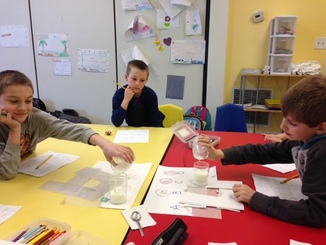 This week in Chemistry we learned what happens when molecules meet. Sometimes there is a reaction where something changes in the way the atoms are hooked together. The molecules might switch atoms and go from one type of molecule to another. Sometimes when molecules meet they join together to form a new molecule. And sometimes molecules might break apart to form entirely new molecules. In all of these situations atoms are neither created or destroyed. They will never appear or disappear. We learned some examples of chemical reactions we might see regularly in our lives, in our world, or even in our own bodies! But just like atoms, reactions follow rules. Our experiment focused on 4 cups of mystery fluids. We wrote down observations about each fluid before beginning to use our senses. We even used taste because we knew the liquids were safe, but we discussed how scientists would never taste something if they didn't know what it was. At first the students wrote down one, maybe two words. But before we shared I had them go through their senses, writing at least one word for each sense that could perceive something. We decided hearing wasn’t a very helpful sense in our circumstances. We shared our observations about each one and came to the conclusion that we were dealing with cups of lemon juice, vinegar, milk, and water mixed with baking soda. We moved on to mixing. We took each possible combination of two cups. Before mixing them, the students wrote down their hypothesis of what they thought would happen. Some combinations showed no reaction, like lemon juice and vinegar or milk and baking soda. Some reactions showed a little change like lemon juice and milk or vinegar and milk. Both lemon juice and vinegar caused the milk to curdle. And some reactions were VERY obvious, with bubbles overflowing the cups and making us jump! These combos were lemon juice and baking soda, as well as vinegar and baking soda. Vinegar and lemon juice have similar molecules, which is why there isn’t a reaction when they combine. Knowing that, the students could guess which liquids had similar molecules and which had very different molecules. The students have all of their observations in their notebook, which they can use to write up their Chemistry notebooking page this week to share in class next week. The Language of Castles In Middle Ages we learned about the English language. That might sound silly, but it was very interesting to learn how many languages we borrowed words from to form what we use today. We saw examples of Old English, which we could barely pronounce let alone try to understand! Some words we have now from Old English are man, house, sheep, dog, wood, field, work, drink, laughter, the, this, here, and that. When the Anglo-Saxons came they drove away the Celts into Ireland, Scotland, and Wales and their language went with them. English didn’t borrow many words from them because Angles and Saxons spent very little time talking to the Celts! English borrowed many words from Latin and Greek when Augustine brought Christianity with him. Words like apostle, pope, angel, and baptize were adopted into the English language from Greek. Latin words English took were minister, nun, monk, gospel, and sanctified. Then the Viking invasion occurred when English adopted some of their short, plain, simple words like leg, skin, skull, angry, cut, crawl, die, and drown. Most of the days of the week are even named after Viking gods. And when William the Conqueror settled in England he brought with him many of his noblemen, which caused many French words to be added in like peace, curtsy, beef, chair, curtain, garden, castle, and rich.
We also learned about feudalism, which came about when William decided that the king was more than a war leader. He thought the king should own all the land that he ruled. William gave his favored knights pieces of England for their own, while the knights promised to fight for William if ever he needed them. The knights came to be called lords and they gave smaller parts of their land to other knights who would fight for them, and to English farmers, called peasants or serfs. In exchange they would give part of whatever they raised or grew to their lord. Every person served someone, and that person gave something in exchange. The lifestyles of a serf and a lord were explained. Some students decided they would like the life of a serf because they worked outside with animals or land and didn’t have the threat of having to join in battle, while others liked the idea of living in a castle with good food and entertainment even though they might have to battle at a moment’s notice. From there we moved on to create our own castles. They could choose if they wanted to build one I had copied on cardstock, one they could create on their own from boxes and tubes, or work in a group on one that Finn had brought in that was about 3 feet tall (thanks Finn!). The class split in half. One half did the cardstock version, while the other half wanted to create their own. This project will need to carry over to next week as their creative juices are flowing! I’m considering having a class of finishing up projects next week as we have our embroidering to finish as well. Students have their mapping page and notebooking for next week. See you then! Comments are closed.
|
Categories
All
Archives
May 2016
|

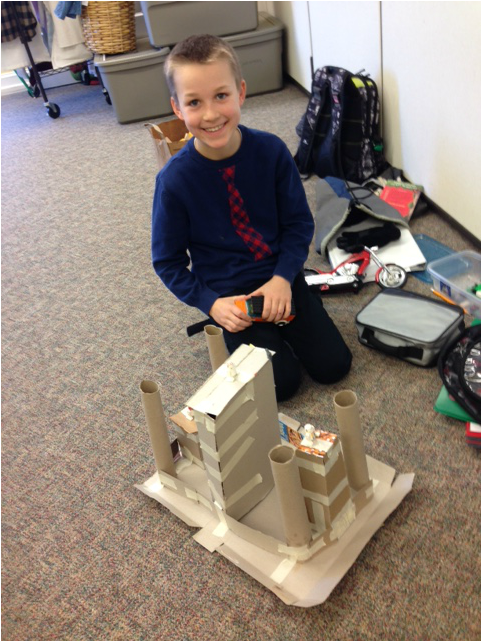
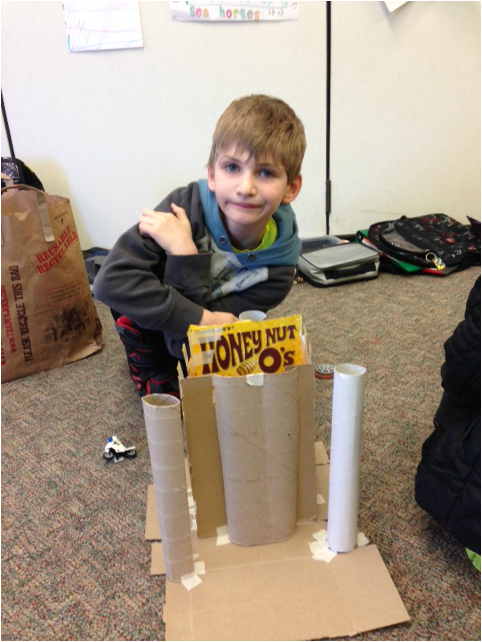
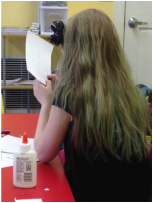
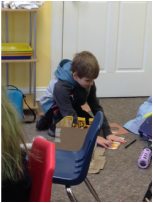
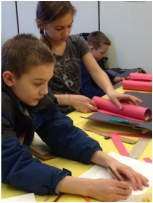
 RSS Feed
RSS Feed